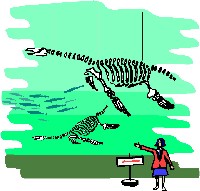
| Tips for displays |
 |




- Tips for displays
 |
What is a display?A display is to show or make something visible. Displays are used in many contexts to communicate information and draw the attention of clients. |
Some practical tips:
 |
 |
 |
 |
 |
| Eye catching | The most important aspect of a display is that it should be eye-catching. You have only a few seconds to get people interested in the display. Make use of colour, visuals (graphics, photographs, etc.) and a good layout (design). | |||
 |
 |
 |
 |
 |
| Position | The position or location of the display is also extremely important. It should be at a place where you will receive maximum "user traffic". It is also important to move displays around and not always have them in the same spot. This will make users aware that there is a new display. | |||
 |
 |
 |
 |
 |
| Resources used in displays | You can use many different types of resources to make your display interesting and eye-catching, such as posters, pamphlets, books, periodicals, newspaper clippings, sound, computer screens with interesting visuals, etc. The type of resources you use will depend on your target audience, the purpose of the display and what you are trying to achieve. In a Library it is not possible to use sound, as it can disturb other users. | |||
 |
 |
 |
 |
 |
